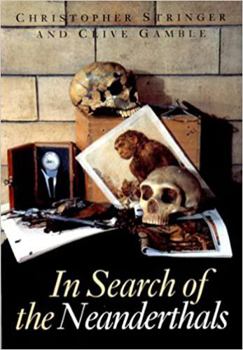In Search of the Neanderthals: Solving the Puzzle of Human Origins
Select Format
Select Condition 
Book Overview
Portrayed as club-wielding cavemen, the Neanderthals have become the archetype of all that is primitive and uncultured. But were the Neanderthals the ancestors of modern humans, or an evolutionary... This description may be from another edition of this product.
Format:Paperback
Language:English
ISBN:0500278075
ISBN13:9780500278079
Release Date:January 1995
Publisher:Thames & Hudson
Length:248 Pages
Weight:1.33 lbs.
Dimensions:0.9" x 6.9" x 10.1"
Customer Reviews
3 ratings
No complaints here!
Published by Thriftbooks.com User , 19 years ago
The book was in perfect condition and the shipping was really fast.
Brilliant
Published by Thriftbooks.com User , 19 years ago
Having only a cursory knowledge about human pre-history, I asked a colleague in the anthropology department for a good primer. He gave me this. It was a veritable cornicoupia of information, even as the authors sought to provide their own answers to quesitons of acadmeic controversey. The central question Stringer and Gamble seek to answer is: are modern humans kin to Neaderthals, or are we distantly related? In answering this, readers are treated to a briefing on the ice age world of the Lower and Middle Paleolithic, the relation of Neanderthals to other early humans, the way in which Neanderthals have been understood (and seen) by science and the public, before the book really hits its stride in disucssing the archaeology of Neanderthal sites and what they tell us about these early humans. The authors belive that modern humans are related to (rather than directly from) Neanderthals, and that by the Upper Paleolithic, were being replaced by modern humans coming out of Africa ("Out of Africa II"). The evidence in support of this is strong, although not overwhelming: mtDNA (mitochondrial DNA) as well as behavioural data are primarily used. In all, it was a worthwhile and fascinating read, and certainly provides more depth on the specific case of Neanderthals than other books on early humans.
Well done...
Published by Thriftbooks.com User , 23 years ago
The authors really do a great job in doing a detailed study of Neanderthals, their lives and their world. They catalogue the fossils found, examine how we know what we know from the bones, tools and even the ash from the fires.The only problem is that the book was published in 1993-1994 and does not take into account later DNA tests and the four-year-old child who lived five thousand years after the last of the Neanderthals SHOULD of died (found in 1999)who showed signs of interbreeding between modern humans and Neanderthals. So, while the conclusion in the book that we did not come from Neanderthals may not be correct (and still open to debate), the chapters dealing in detail with Neanderthal tools, camp sites, society, art and burial are a must for people interested in the subject...






